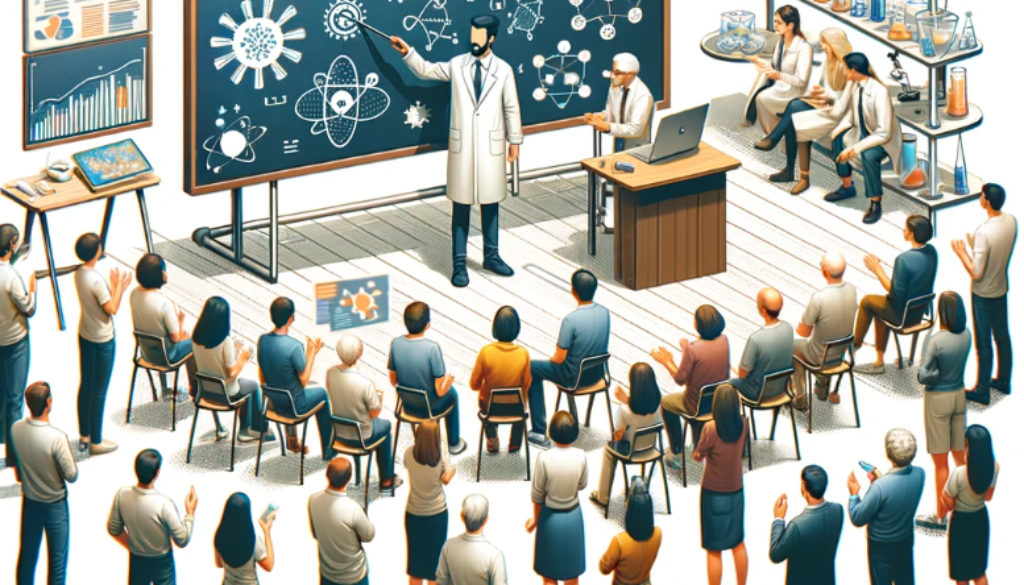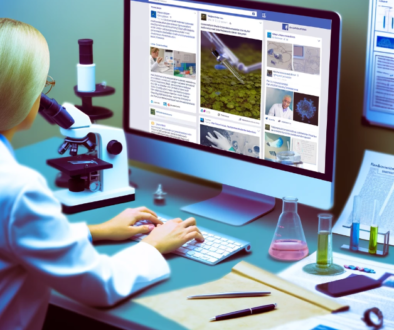Why don’t people trust science?
The doubt of scientific expertise is dangerous, especially during the weird times we live in now. In 2020, when vaccines were still being produced, we saw rising anti-vaccination views on the internet. Anti-vax groups discussed safety concerns, conspiracy theories, and alternative medicine, including false causes and cures of the COVID-19 virus. Some people went as far as claiming that the new 5G technology was the cause of the virus.
Today, with so much information available to us, it is tough to distinguish the truth from all the fake news on the internet seeking clicks and easy money. Without a proper STEM education, someone can easily be fooled by any fraudulent speech as long as it sounds “sciency” enough. This lack of education is certainly not due to the lack of science being done.
Each year, more than 1 million scientific articles describing new technologies and discoveries are published. And that’s only in the field of medicine! Why, then, do people still believe that radio waves can cause a virus infection?
That’s because the information that scientists are publishing is not available to the general public! And there are two reasons for that:
1. Scientific papers are published in closed journals.
The first reason is very straightforward. Most of the academic articles are published in journals that demand a high fee for access. Even scientists sometimes have trouble accessing articles that are relevant to their field of research. To access such papers, one would either have to pay, get access through a university VPN, or look for an alternative supplier, such as the shadow library Sci-Hub.
This, of course, makes access to scientific information much harder. Without an actual need, someone outside of STEM is unlikely to go out of their way to access academic papers. Suppose the information is not accessible on the first page of a Google search. In that case, someone who’s simply curious will probably not find the most up-to-date information on the subject.
2. Scientific papers are not written for the general public.
Let’s say that people had good access to scientific articles. Even if this was the case, people would still have a hard time understanding what is written. Whatever scientists write is complete gibberish to the general public! Hell, sometimes it’s gibberish for me who reads scientific articles daily!
How can we expect the general public to be informed about science when what scientists write is unreadable without background knowledge? A traditional scientific paper is full of jargon and acronyms that make the text-heavy and hard to follow.
I’m not proposing that we change the way scientists report their findings. After all, all the technical terms are essential to fully describe the subject that is being discussed. Instead, I’m revisiting the old idea that more streams of reliable scientific information that is tailored for the general public should be available. Today most of the published science is seen only by scientists to produce more science to be seen by scientists. It rarely exists towards the ‘real world.’
The consequence is that the public develops a mistrust towards scientists because they have no idea what scientists do! Today’s science is almost a black box that outputs something every once in a while when the new discovery is exciting or sensational enough to be shown on mainstream media.
For this reason, more scientists should get involved in social media to report their daily findings and to make science more familiar to the general public. Scientists showing their faces on YouTube, Instagram, Twitter, or Tiktok can make science more friendly, more human, and more relatable. That way, trust can be restored.
What if scientists start showcasing their science?
What does the public win?
As more and more scientists start presenting the science they make, the public will have access to more information. They will certainly begin to learn new things. The increased presence of scientific content on the internet will ignite people’s curiosity and stimulate their critical thinking. The best part is that all the new curiosity will be fed with legitimate content presented by people who understand it. Plus, the content will hopefully be presented in a more relatable and familiar way, making learning science much more enjoyable!
Overall, we’d expect people to become better citizens as they learn more about different subjects while having fun with relatable content produced by scientists.
What do scientists win?
A scientist getting involved in science communication will have the chance to better understand “the big picture” of their research. Science communication forces scientists to think differently and look at their research from new angles.
Also, scientists would make their voices heard. As the general public learns more about their work and as their audience increases, they get more leverage to advocate for social justice supported by their research. Plus, they gain greater trust with the public.
The greater trust increases their reputation, which can certainly come with many more advantages, including new funding sources for their research!
Additionally, by getting involved in science communication, scientists can develop and refine many new skills such as public speaking, teamwork, project management, writing, etc.
What does everyone win?
As mentioned previously, an increased scientific presence in social media may lead to a more educated public who trusts scientists more. People would be more likely to believe scientists and follow instructions proposed by them based on scientific evidence. This will undoubtedly lead to better cooperativity when we fight global warming, try to contain a pandemic, or when we have to deal with any new challenge.
In other words, we don’t lose our planet to global warming, and fewer people will die because of new viruses and preventable diseases.
Seems like a pretty good deal to me.
The COVID 19 Pandemic seems to have restored some of the trust in the scientific community.
Every year, the company 3M performs an international survey trying to quantify how society feels about science. They have been conducting the survey for the past 3 years now. Every year, they saw an increasing mistrust in science from the general public.
This past year, they decided to perform the survey a second time to see if the global pandemic impacted the view that people had of science. For the first time since they started conducting the study, they reported a decrease in people saying that they are skeptical of science! The pandemic didn’t only cause a decline in this number but brought it down to its all-time low at 28%! Before the pandemic, 35% of people reported being skeptical of science. That’s more than 1 in 3 people!
Check out the results of their survey here!
The mistrust in science has decreased during the pandemic partly because scientists were forced to be more involved in science communication, as governments had to maintain the population informed. During this past year, we saw plenty of scientists on television. Dr. Anthony Fauci in the United States and Dr. Theresa Tam in Canada are great examples of new familiar faces from science.
Plus, many scientists using platforms such as Tiktok and Youtube increased their audience since the beginning of the pandemic. Some of my favourite examples are Darrion Nguyen (@lab_shenanigans on Tiktok) and Hank Green (@hankgreen1 on Tiktok).
This is great motivation for new scientists to get out there and start reporting their latest findings in ways that people can understand and relate to.
If you read all the way down here, thank you! You’re a legend! I’d love to hear your opinion on the subject and discuss it a bit more! Let me know if you’re a scientist yourself. If you’re interested in getting involved in Sci-Comm, but you’re not quite sure where to start, send me a message, and we can exchange some ideas! I’m trying to get started on that myself!
Cheers,
Matheus Schultz.

